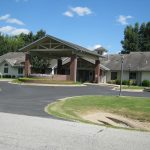A recent report indicates that assisted living residents rate “sense of camaraderie” as the most important factor influencing their overall satisfaction with their quality of life at the facilities in which they live. The report, People, Place, Programming: Quality of Life in Assisted Living, is based on a study conducted by ProMatura Group on behalf of the American Seniors Housing Association (ASHA). Over 2000 assisted living residents and family members from more than 100 different facilities participated in the study, which surveyed their opinions on their experiences in several facets of senior living. The intent of the study was to discover ways that senior living facilities and communities can better create a more home-like environment and satisfying living experience for residents.
The survey concentrated on eight different key quality indicators (KQI) in order to make a comprehensive, well-rounded evaluation of residents’ experiences and needs. These included overall satisfaction, sense of feeling at home, sense of safety and security, sense of value, sense of control, perception of how the community runs, willingness to recommend the community to others, and willingness to make the decision to move to the community if they were to do it again. While these findings are not a complete surprise to Cambridge Realty Capital President Jeffrey Davis, “they are certainly food for thought” he stated.
Interestingly, while residents placed the greatest value on sense of camaraderie, their family members largely felt differently. Rather, the factor that was most influential to family members satisfaction with their loved ones’ facility was food, referring to its overall quality, as well as variety and number of dining and menu options available in their loved ones’ facilities.
The findings may be eye-opening for some senior living operators. “There is a lot of emphasis in senior living development today on contemporary design as well as on-site services and amenities, like gyms and spas,” notes Davis. “A facility may put extra effort into creating ‘curb appeal,’ but at the end of the day, what residents actually care most about is the quality of the relationships that they have, both with fellow residents as well as staff members.”
This is not to de-value the research and work that has been done in the area of senior facility design or the desire of residents to access on-site services. However, it does show that a facility or community doesn’t necessarily have to have all of the modern “bells and whistles” to be a desirable place for seniors to want to live or for their families to have confidence in. “In light of the findings of this report, operators may need to rethink how they allocate operational dollars in order to have a facility that is attractive enough to generate interest from potential residents and family members, but which also continuously strives to foster a sense of camaraderie within an environment that feels safe and secure. It’s easier to put a price tag on tangibles like a building than on the value of strong, secure relationships,” Davis said.
To download a copy of People, Place, Programming: Quality of Life in Assisted Living, visit https://www.seniorshousing.org/bookstore.php. The report is free to download for ASHA members, or $300 for non-members.




